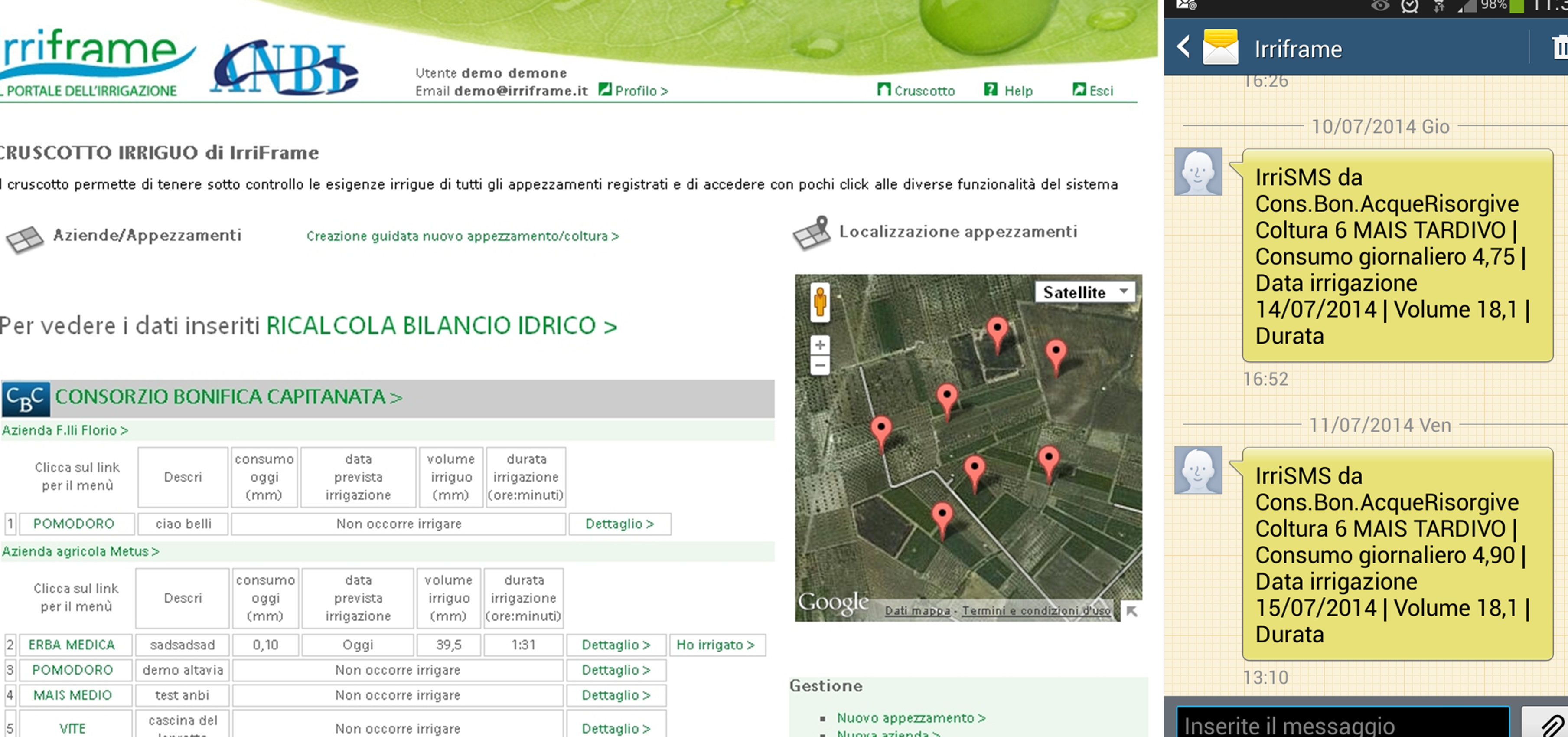IRRINET is an IT irrigation system aiming to advise farmers on efficient water management. This web service was developed with public funding by the CER (Canale Emiliano Romagnolo, a water consortium located in the Emilia-Romagna region) based on a 1984 project which tested the use of telematics tools in agriculture in Emilia-Romagna. In 1999, with the arrival of Internet, IRRINET started to be developed in a web form and is still active and operative in this Italian region. Considering the increasing need for wise and efficient use of water and the impacts of climate change on water availability, the National Association of Land Reclamation Boards (ANBI) developed IRRIFRAME a similar IT service modelled on IRRINET. In 2014, the Ministry of Agricultural, Food and Forestry Policies identified IRRIFRAME as the most widespread and advanced information irrigation system for farmers in Italy.
In Emilia-Romagna, IRRINET is available free of charge and currently provides more than 12,000 farms with irrigation scheduling on daily basis via a Web interface, SMS and Tablet App. This information supports the efficient use of water resources in the agricultural sector, contributing to cope with water shortage in the light of climate change. IRRINET processes data and information on meteorological (rain and evapotranspiration), soil and crop parameters, whose combination generates the so-called water balance for individual crop, enabling to define the real water demand and save irrigation water without decreasing the quality of crop production. In 2017, it has been estimated that such service allows a yearly water saving of about 90 million of cubic meters (corresponding to 20% of the total agricultural demand) in Emilia Romagna region, without depressing yields.



